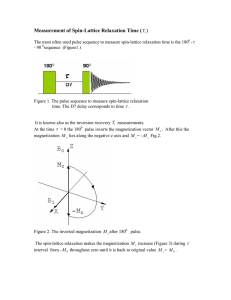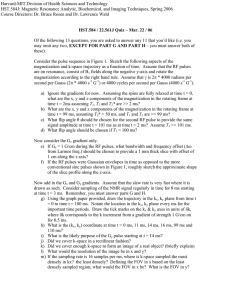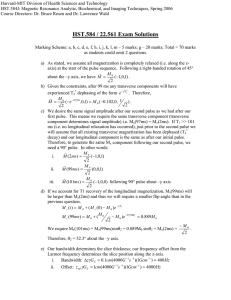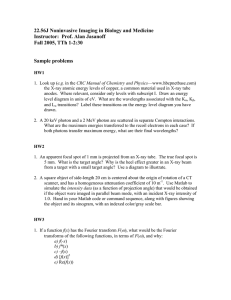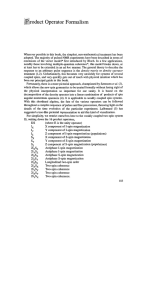HST.584 / 22.561 – Problem Set 3
advertisement
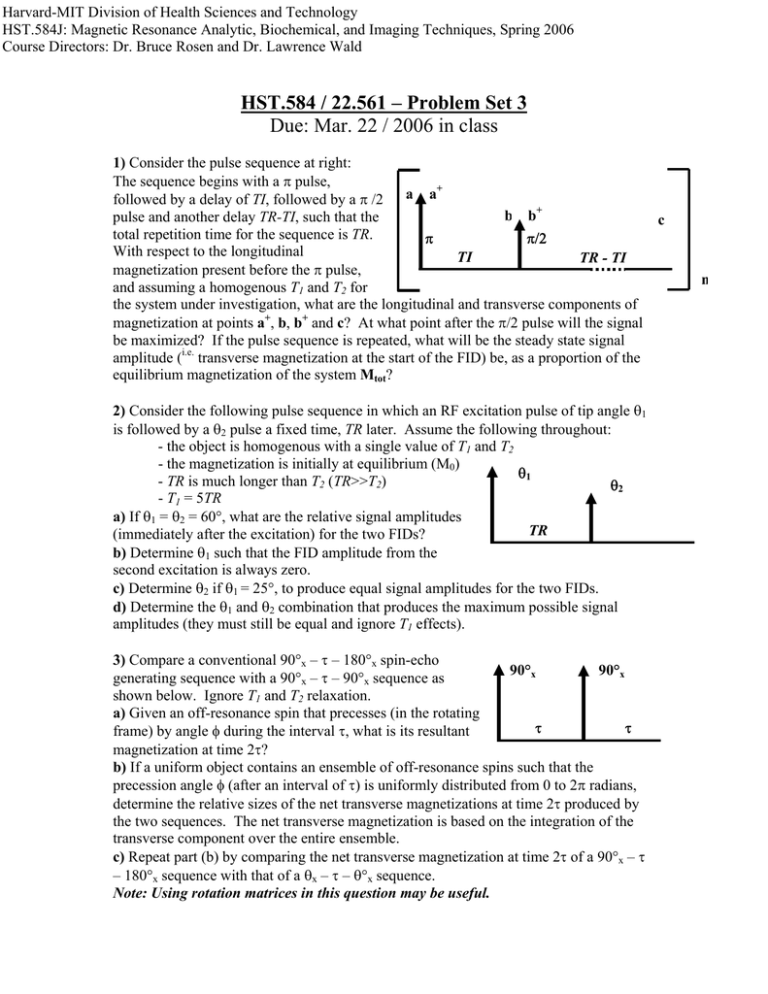
Harvard-MIT Division of Health Sciences and Technology HST.584J: Magnetic Resonance Analytic, Biochemical, and Imaging Techniques, Spring 2006 Course Directors: Dr. Bruce Rosen and Dr. Lawrence Wald HST.584 / 22.561 – Problem Set 3 Due: Mar. 22 / 2006 in class 1) Consider the pulse sequence at right: The sequence begins with a π pulse, + followed by a delay of TI, followed by a π /2 a a b b+ pulse and another delay TR-TI, such that the c total repetition time for the sequence is TR. π/2 π With respect to the longitudinal TI TR - TI magnetization present before the π pulse, and assuming a homogenous T1 and T2 for the system under investigation, what are the longitudinal and transverse components of magnetization at points a+, b, b+ and c? At what point after the π/2 pulse will the signal be maximized? If the pulse sequence is repeated, what will be the steady state signal amplitude (i.e. transverse magnetization at the start of the FID) be, as a proportion of the equilibrium magnetization of the system Mtot? 2) Consider the following pulse sequence in which an RF excitation pulse of tip angle θ1 is followed by a θ2 pulse a fixed time, TR later. Assume the following throughout: - the object is homogenous with a single value of T1 and T2 - the magnetization is initially at equilibrium (M0) θ1 - TR is much longer than T2 (TR>>T2) θ2 - T1 = 5TR a) If θ1 = θ2 = 60°, what are the relative signal amplitudes TR (immediately after the excitation) for the two FIDs? b) Determine θ1 such that the FID amplitude from the second excitation is always zero. c) Determine θ2 if θ1 = 25°, to produce equal signal amplitudes for the two FIDs. d) Determine the θ1 and θ2 combination that produces the maximum possible signal amplitudes (they must still be equal and ignore T1 effects). 3) Compare a conventional 90°x – τ – 180°x spin-echo 90°x 90°x generating sequence with a 90°x – τ – 90°x sequence as shown below. Ignore T1 and T2 relaxation. a) Given an off-resonance spin that precesses (in the rotating τ τ frame) by angle φ during the interval τ, what is its resultant magnetization at time 2τ? b) If a uniform object contains an ensemble of off-resonance spins such that the precession angle φ (after an interval of τ) is uniformly distributed from 0 to 2π radians, determine the relative sizes of the net transverse magnetizations at time 2τ produced by the two sequences. The net transverse magnetization is based on the integration of the transverse component over the entire ensemble. c) Repeat part (b) by comparing the net transverse magnetization at time 2τ of a 90°x – τ – 180°x sequence with that of a θx – τ – θ°x sequence. Note: Using rotation matrices in this question may be useful. n


